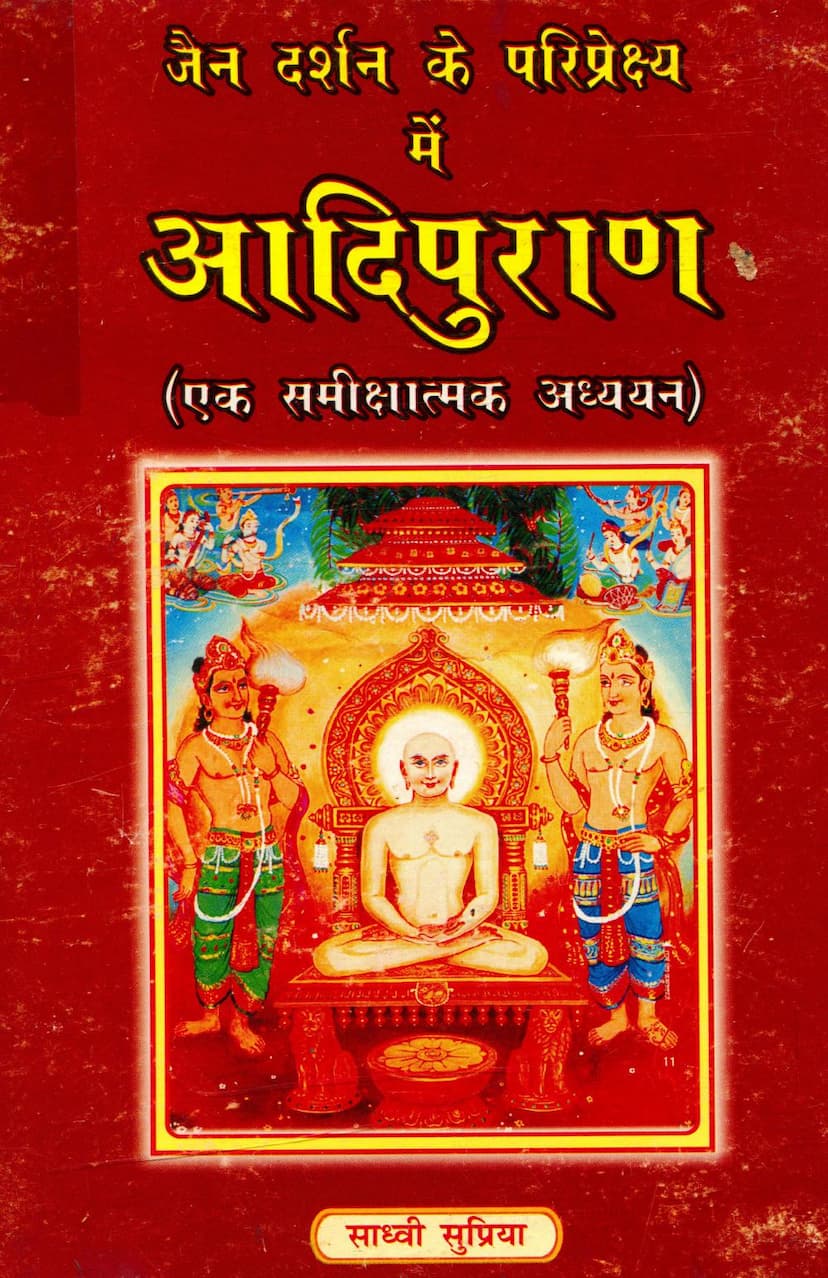Jain Darshan Ke Pariprekshya Me Aadipuran
Added to library: September 1, 2025
Loading image...

Summary
This book, "Jain Darshan Ke Pariprekshya Me Aadipuran: Ek Sameekshatmak Adhyayan" (Adipurana in the Context of Jain Philosophy: A Critical Study) by Sadhavi Supriya, is a scholarly work that delves into the ancient Jain text, the Adipurana (also known as Mahapurana), from the perspective of Jain philosophy.
The book was published by Bharatiya Vidya Prakashan.
Key aspects highlighted in the provided pages include:
- Author's Background: Sadhavi Supriya (originally Manjubala) is a highly educated Jain monk. She pursued her studies diligently, achieving double M.A. degrees in Hindi and Sanskrit, and a Ph.D. from Punjab University, Chandigarh, on the topic of the Adipurana from a Jain philosophical standpoint. Her education was supported and encouraged by her gurus, highlighting the importance of knowledge acquisition within the Jain monastic tradition.
- The Significance of Adipurana: The Adipurana, composed by Acharya Jinasena and completed by his disciple Gunabhadra, is a monumental work in Jain literature. It is considered a primary text in the Prathamanuyoga (first exposition) of the Digambara tradition, which deals with the lives of great souls (Shalaka Purushas). The book emphasizes that Adipurana is not just a narrative but a comprehensive repository of Jain philosophy, covering theological principles (tattva mimamsa), ethics (achar darshan), cosmology, and the history of religious life. It is noted that much of the philosophical content scattered across the Jain Agamas is intricately woven into the narratives of Adipurana.
- Jain Philosophy and its Concepts: The book is structured to analyze Adipurana through the lens of core Jain philosophical concepts. The Preface and Introduction (Prastavana, Purovak, Bhumika) lay the groundwork by differentiating between Dharma, Darshan, and Adhyatma. They explain the three states of the soul: Bahiratma (external soul, ignorant of its true nature), Antaratma (inner soul, striving for self-realization), and Paramatma (the liberated soul, the Supreme Soul). The text also elaborates on the fundamental Jain principles of reality (tattva), including the six substances (shaddravya), the classification of soul (jiva) into different categories, the nature of non-soul (ajiva), the concepts of karma, merit (punya), demerit (paap), influx (asrav), stoppage (samvar), shedding of karma (nirjara), and liberation (moksha).
- Structure of the Study: The book is divided into seven chapters that systematically explore the philosophical underpinnings of Adipurana:
- Chapter 1: Deals with the philosophical background of Adipurana, including an introduction to Jain Agamas, the concept of Purana in Jainism, and the personality and literary contributions of Acharya Jinasena.
- Chapter 2: Focuses on the discussion of fundamental principles (tattva vimarsa) and the ideology surrounding the soul (jiva tattva).
- Chapter 3: Examines the concepts of hell (naraka) and heaven (svarga) as depicted in Adipurana, detailing the various levels of hells, the causes of birth in hell, the suffering experienced by hell-dwellers, and a description of the celestial abodes.
- Chapter 4: Analyzes the ajiva (non-soul) element, including its various categories like karma pudgala and kala (time).
- Chapter 5: Discusses concepts like punya (merit), paap (demerit), asrav (influx of karma), samvar (stoppage of karma), nirjara (shedding of karma), and the means to achieve nirjara such as austerities (tapas), psychic powers (riddhi), and charity (daan).
- Chapter 6: Investigates different perceptions of God (Ishvara) and elaborates on the "three jewels" (Ratnatraya) – Right Faith (Samyagdarshan), Right Knowledge (Samyagjnana), and Right Conduct (Samyagcharitra) – which are central to the path of liberation in Jainism.
- Chapter 7: Explores the concepts of Moksha (liberation) and Siddhashila (the abode of the liberated souls).
- Critical and Scientific Approach: The work is described as a "critical study" and a "scientific and experimental contemplation," suggesting that Sadhavi Supriya has not only presented the textual content but also analyzed it with a thoughtful and insightful perspective.
- Accessibility: The book aims to make the complex subject matter of Jain philosophy and the Adipurana accessible to the general public, bridging the gap between ancient texts and modern understanding.
- Endorsements: The book is highly praised by prominent Jain scholars and spiritual leaders like Acharya Shiv Muni, Amar Muni, and Jitendra Muni, who commend Sadhavi Supriya's dedication, hard work, and intellectual prowess, expressing hope that the book will inspire readers towards detachment and serve as a valuable resource for researchers.
In essence, this book is a significant contribution to Jain studies, offering a philosophical analysis of the Adipurana, shedding light on its teachings through the rigorous lens of Jain doctrine. It highlights the profound philosophical depth embedded within Jain narrative traditions.